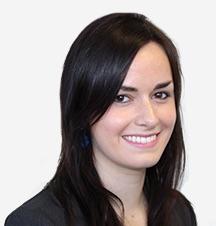Fresh New Voices: From The World of Virtual Healthcare
Posted on | September 20, 2015 | Comments Off on Fresh New Voices: From The World of Virtual Healthcare
Since 2003, we’ve been delivering weekly packets of virtual health education. Now, twelve years after we began, the movement has become increasingly institutionalized and professional. Some of the offerings are small and some are huge. Consider the giant MOOC offerings (Massive Open Online Course) like Stanford’s 2013 course which rapidly reached an open enrollment of 160,000. By then, more than 6 million U.S. students had taken at least one course online, and 2/3 of all institutions of higher education cited online learning as critical to their future survival.
Virtual students in the best programs rate their virtual experiences highly for content, interaction, convenience, depth of learning, and exposure to the most advanced educational technologies. Students coming out of these programs, or working for the organizations that sponsor them, tend to be lifelong virtual learners and active sharers. Exploring, producing, and sharing content seems to be in their DNA.
At Health Commentary, we’re happy in a small way to be part of the movement. In celebrating its’ growth and success, we are pleased to introduce you to this week’s two guest authors who are intimately involved in the virtual healthcare education field:
Sophia Bernazzani is the community manager for MHA@GW, the masters in health administration online offered by the Milken Institute School of Public Health at the George Washington University. She’s passionate about global health, sustainability, and nutrition. Her piece is titled, “A Closer Look at Preventable Harm”. Follow her on Twitter.
Julie Sweet is an editor of healthcare information for 2U.com. She earned her bachelor’s degree at Fordham University in New York City. She has recently moved from New York to Durham, North Carolina, where she supports 2U’s Healthcare Degree programs. Her post is titled, “How Climate Change is Hurting Our Health.”
_______________________________________________________________
Sophia Bernazzani
When faced with a serious medical issue, most of us think about direct outcomes. Will there be a scar? How long will it be until I can go back to work or pick up my daughter? We spend much less time considering that things could go wrong: a surgery on the wrong site, a fall in the hospital, or an infection from improperly sterilized materials. Sadly, these types of medical errors, referred to as preventable harm, affect up to 1 in 4 discharges and cause an estimated 1,000 patient deaths per day. Only heart disease and cancer kill more Americans. It would seem the solution to the preventable harm question would be easy… find a way to “prevent” the harm. Unfortunately, it is not nearly that simple.(…continue)
_________________________________________________________________
Julie Sweet
Amid continued warnings about melting arctic ice and dangerous greenhouse gas emissions, a new conversation is emerging—how climate change is hurting our health. The human impact is already evident to 7 out of 10 physicians, according to a study published in the February Annals of the American Thoracic Society. The majority polled said they see the effects of climate change reflected in patients in several ways: more severe chronic disease as a result of air pollution, more allergies from exposure to plants and mold, and more injuries caused by severe weather.
“Around the world, variations in climate are affecting, in profoundly diverse ways, the air we breathe, the food we eat, and the water we drink,” wrote Dr. Maria Neira, director of the World Health Organization’s public health and environment department, in a recent commentary. “We are losing our capacity to sustain human life in good health.”
Although the world’s poor and sick are most vulnerable, every person on the planet is subject to the health effects of climate change. Here’s a look at how our hurting environment is gearing up to impact human health in the United States. (…continue)




